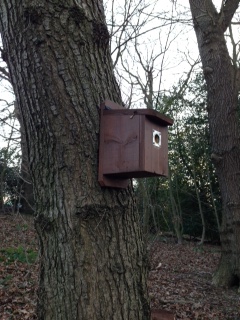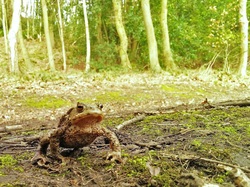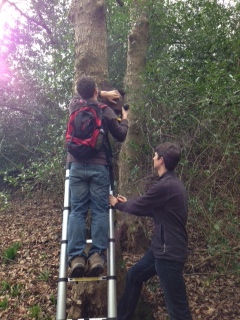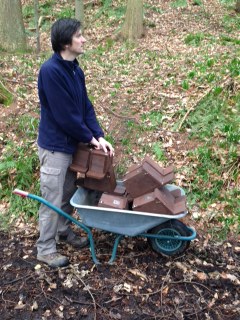For more information can be found on-line and on Christine's page.
|
An important component of the work done in the CEG examines how species will respond to environmental change. Species distribution models are often used to understand why species are found in particular areas, and where they might occur in the future. There are many modelling approaches utilizing different types of data, and there is much debate about what types of models make the best predictions. Christine Howard et al., in a paper in press in Methods in Ecology and Evolution, compared European bird distribution models built with presence-absence data to those built with abundance data. They found that models which used bird abundance were better able to predict species distributions and provided additional information on abundance patterns. Their findings suggest that, where available, species abundance data should be used to develop models of the impacts of environmental change, and highlights the value of collecting species abundance data.
For more information can be found on-line and on Christine's page.
0 Comments
The CEG is adding another member to the group in October. We will be welcoming Claire Branston who will be working on a NERC-funded projected, with CASE support from the British Trust for Ornithology (BTO), titled ‘The role of climate and habitat in the reproduction and population dynamics of insectivorous birds in British woodlands’. The project will combine nestbox data collected at Durham with similar data from other sites that are co-ordinated by Ali Philimore At Edinburgh Uni, and also using the extensive data resource on nesting birds held by the BTO.
 Blue Tits, Goldcrests, Great Tits, and Robins sang noisily overhead as Dr. Stephen Willis and Dr. David Baker led a group of volunteers out into the woods behind Durham University equipped with ladders, screws and screwdrivers. The sun shone through the leafless canopy as the group made their way past emerging ferns and bluebells, down the muddy trails, looking for just the right tree. In preparation for spring, members of the Conservation Ecology Group (CEG) and the Staff Volunteering and Outreach team (SVO) spent the morning setting up nest boxes for birds in Great High Wood behind the School of Biological and Biomedical Sciences. This project aims to help several species of birds which prefer to nest in tree holes and cavities. As Dr. Willis explained, many of the trees in the woods are very young (30-40 years old) and thus lack the cavities which form naturally in older trees. The boxes deployed today will provide a substitute cavity. In the woods on campus, nesting Tits might find all the food they need to raise their young within 30 meters of a nesting site, therefore the boxes were distributed throughout the woods to provide the required space around each box. The group set up over 30 boxes, adding to the many boxes left up from previous seasons. By getting the boxes up early, the birds have time to find them and evaluate the surrounding habitat. Most importantly the birds do make use of the boxes, and last year up to 60% of the boxes were occupied. The nest boxes measure around 8x10x5 inches and have a hole in the front just large enough for a Blue or Great Tit to get through. The boxes also contain a removable lid so that researchers can check to see if the box is being used as the nesting season progresses. Checking on the nests throughout the spring provides useful information such as the timing of nesting, the numbers of eggs laid, timing of hatching, and the numbers of chicks that survive to leave the nest. This data, combined with other nest box projects coordinated by the British Trust for Ornithology, is used to keep track of bird numbers and contributes to a growing body of knowledge on bird population trends across the country. This project is also part of ongoing research within the CEG to monitor the biodiversity supported by the woods around Durham University. While the birds will be busy finding their new boxes, there is still much work to do for ecologists and volunteers around campus. If you are interested in helping with the nest box projects or other projects around Durham, please contact a member of the CEG or Experience Durham for available opportunities. For more information on nest boxes visit the British Trust for Ornithology website.  Among the early signs of spring, a toad makes its way through Great High Wood towards a small pond nearby! The CEG is excited to welcome Jodi Chaplin and Melissa Dawson to the lab group in October. Jodi will be working on her MSc by research on 'drivers of nature-based tourism'. Melissa will undertake an MSc by research on 'The effects of fire as a management tool for savanna biodiversity'.
|
Archives
March 2019
Categories
All
|


 RSS Feed
RSS Feed
